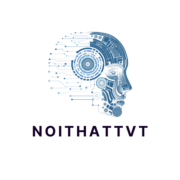Key Takeaways
- Enhanced Learning Experiences: Computers elevate education by offering interactive environments that cater to diverse learning styles through multimedia presentations and simulations.
- Access to Extensive Resources: Students benefit from a wealth of online resources like e-books, academic journals, and educational videos, empowering self-directed learning.
- Personalized Learning: Technology enables tailored educational experiences where instructors can adjust their teaching methods to meet individual student needs effectively.
- Global Collaboration: Computers facilitate teamwork and communication among students and educators worldwide, breaking geographical barriers and enhancing diverse perspectives.
- Career Preparedness: The integration of technology in education equips students with essential skills such as coding and digital literacy, increasing their employability in a tech-driven job market.
- Challenges to Overcome: Addressing technological disparities and ensuring adequate teacher training are crucial for the effective integration of computers in education.
In today’s digital age, computers have transformed education in ways that were once unimaginable. They serve as powerful tools that enhance learning experiences and make information more accessible than ever before. From interactive lessons to online resources, computers enable students to engage with material in diverse and dynamic ways.
As educators embrace technology, the classroom evolves into a vibrant space where collaboration and creativity flourish. Students can connect with peers and experts around the globe, breaking down geographical barriers and expanding their horizons. This shift not only prepares them for a tech-driven world but also fosters critical thinking and problem-solving skills essential for future success.
Computers and Education
Computers play a crucial role in modern education, transforming traditional teaching methods into dynamic learning experiences. Their integration enhances accessibility, allowing students to access vast resources online, including e-books, research papers, and educational videos.
Computers facilitate personalized learning, enabling educators to tailor instruction according to individual student needs. Learning management systems (LMS) provide platforms for assignment submissions, assessments, and feedback, streamlining communication between teachers and students.
Collaborative tools, such as forums and video conferencing software, enable global connections among students and educators. Learners collaborate on projects regardless of geographical barriers, fostering teamwork and diverse perspectives.
Moreover, computers prepare students for future careers that demand technological proficiency. Skills such as coding, data analysis, and digital literacy are essential for success in various fields. By utilizing computers, students develop these competencies, which enhance their employability in an increasingly digital job market.
Overall, computers have revolutionized education, promoting engagement and efficiency while equipping students with the skills necessary for future challenges.
Benefits of Computers in Education

Computers significantly enhance the educational landscape by improving learning experiences and expanding access to resources.
Enhanced Learning Experience
Computers foster interactive and engaging learning environments. They support multimedia presentations, which combine text, audio, and visuals. This integration reinforces concepts and caters to various learning styles. Software applications provide simulations and virtual labs, allowing students to experiment in a risk-free setting. Learning management systems (LMS) enable personalized instruction, where educators can track progress and cater to individual learning needs. Collaborative platforms facilitate project-based learning, letting students work together on assignments regardless of location. Overall, the dynamic nature of computer-integrated education promotes deeper understanding and retention of information.
Access to Resources
Computers grant students access to a wealth of online resources. They can explore e-books, academic journals, and educational videos, enhancing their research capabilities. Online databases and libraries open doors to information that might be unavailable in traditional settings. Additionally, educational websites and platforms offer free courses on various subjects, expanding learning opportunities beyond the classroom. This accessibility empowers students to take charge of their education and delve into topics of interest at their own pace. Ultimately, computers serve as a gateway to knowledge, breaking down barriers to educational resources.
Challenges of Implementing Computers in Education
Implementing computers in education presents several challenges that can hinder effectiveness. Key issues include technological disparities and inadequate teacher training and support.
Technological Disparities
Technological disparities create significant barriers in educational settings. Access to computers varies among students, leading to inequalities in learning opportunities. According to a report from the Pew Research Center, 15% of U.S. households with school-aged children lack high-speed internet access. This gap affects students’ ability to complete assignments and participate in online learning effectively. Schools in low-income areas often struggle to provide updated hardware and software, widening the achievement gap. Addressing these disparities requires investments in infrastructure and equitable access to technology for all students.
Teacher Training and Support
Teacher training and support represent critical components for successful computer integration in education. Without adequate training, educators might feel overwhelmed or unprepared to utilize technology effectively. A study by the International Society for Technology in Education indicates that only 29% of teachers receive sufficient training in using technology for instruction. Limited support can result in underutilization of available tools, leading to missed opportunities for enhancing the learning experience. Providing ongoing professional development and resources ensures teachers are equipped to integrate computers into their classrooms, ultimately benefiting students.
Innovations in Educational Technology
Innovative educational technology continues to reshape learning environments, offering students and educators dynamic tools for enhanced educational experiences.
Online Learning Platforms
Online learning platforms revolutionize access to education by providing students with the flexibility to learn anytime and anywhere. Platforms like Coursera and Udemy offer a variety of courses across multiple disciplines, often developed by reputable institutions and industry experts. These platforms facilitate self-paced learning, allowing students to revisit materials as needed, enhancing comprehension. Additionally, data indicates that 70% of learners benefit from the ability to learn at their own pace, leading to improved academic outcomes. Furthermore, many online platforms feature discussion boards and group projects, encouraging collaboration and peer interaction among students globally.
Interactive Software and Applications
Interactive software and applications engage students through immersive learning experiences. Tools such as Kahoot! and Quizlet promote active participation in the classroom by transforming assessments into interactive games and quizzes. Educators utilize these platforms to create customized quizzes that cater to different learning styles, boosting student engagement. Research shows that students who engage with interactive content retain 70% more information compared to traditional learning methods. Moreover, simulations provided by software like PhET Interactive Simulations allow students to experiment with complex scientific concepts in a risk-free environment, fostering critical thinking and problem-solving skills. Recognizing the wide-ranging applicability of these tools, educators increasingly adopt interactive software to create vibrant learning experiences.
Future Trends in Computers and Education

Emerging technologies continue to reshape education, driving innovation in pedagogical approaches. The integration of computers enhances learning experiences through advanced tools that foster engagement and accessibility.
Integration of Artificial Intelligence
Artificial Intelligence (AI) transforms educational landscapes by personalizing learning experiences. AI-driven platforms assess student performance, adapt content based on individual needs, and provide real-time feedback. For example, platforms like Carnegie Learning use AI to tailor math instruction, improving student understanding. Additionally, chatbots facilitate instant communication, answering questions and providing support outside classroom hours. These implementations not only streamline administrative tasks but also create adaptive learning environments that cater to diverse learner profiles.
Virtual and Augmented Reality in Learning
Virtual Reality (VR) and Augmented Reality (AR) revolutionize interactive learning experiences that immerse students in dynamic environments. VR allows learners to explore historical sites or conduct scientific experiments in simulated settings, enhancing engagement and retention. For instance, platforms such as Google Expeditions let students virtually visit landmarks to deepen their understanding. AR, on the other hand, overlays digital information onto the physical world, enriching traditional learning materials. Applications like Merge Cube enable hands-on interaction with 3D models, fostering curiosity and exploration. These technologies create opportunities for experiential learning, bridging the gap between theory and practical application.
Innovations and Computers
The role of computers in education is undeniable. They’ve transformed traditional classrooms into vibrant learning hubs that foster collaboration and creativity. As technology continues to evolve, it’s crucial to address barriers like access and teacher training to maximize its potential.
Innovations such as AI and immersive technologies are set to redefine learning experiences, making education more personalized and engaging. The future of education hinges on the effective integration of these tools, ensuring that every student has the opportunity to thrive in a digital world. Embracing this change not only equips learners with essential skills but also prepares them for the challenges of an increasingly tech-driven society.

